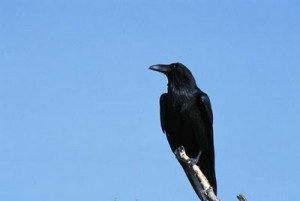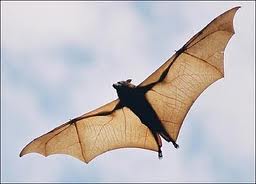We have much more to do and your continued support is needed now more than ever.
The Most Fascinating Things About Halloween’s Scariest Creatures
Halloween is full of little costumed spooks and goblins. But it also has its own standard menagerie of “scary” creatures including bats, cats, spiders, ravens and crows. Indeed, the imagery of a scary Halloween night is full of wild animals. But the truth about these many creatures may be as interesting as the myths that surround them as their images appear on America’s fright night.
Crows and Ravens

- They remember your face. Once a crow is mad at you and it will remember it doesn’t like you for ages and will raise a real fuss when it sees you.
- They conspire. Crows communicate at a high level with one another using dozens of different “caws.” This helps them organize to pursue certain food sources (Farmer Brown’s corn), post lookouts and chase off predators.
- They use tools and can plan ahead. Crows have been seen using twigs to pry open food or to check on whether a snake is alive but their most unbelievable feat is to lay hard-to-open nuts on a road and wait for a vehicle to come by and break it open. Now THAT is scary!
Spiders
They are so frightening to so many people that their images have become a constant for Halloween. They even have their own psychiatric condition: Arachnophobia

- You can’t get away from them. There are about 70,000 species in the world.
- Black widow spiders may be the scariest because they often cannibalize they mates.
- Some species of tarantulas can fight off predators by shooting irritating hairs at them.
- What might be the largest spider web ever was found in a Texas Park a few years back and covered several trees. It was so big it drew thousands of visitors.
- The true spiders of the order Araneae comprise the largest group of carnivorous animals on Earth.
Bats
Bats have become associated with blood sucking vampires. They are mostly nocturnal and certain species (vampire bats) do indeed draw blood in small amounts from animals for food. This make them seem scary but they do not harm humans. There are other things about bats you should know.
- They are the only flying mammal. A flying squirrel does not actually fly, it glides.
- The largest bat (the Malaysian flying fox) has a six foot wingspan
- One bat will eat 2,000 to 6,000 insects per night.
- The Honduran white bat, a colorful snow-white, cuts leaves to make “tents” to protect its small colonies from drenching jungle rains.

Flyin Fox Bat Cns. Intnl. - Sadly, North America’s bat colonies are besieged by a life-threatening fungus that is wiping out entire colonies. Scientists are working hard to find cures and solutions.
Black Cats
They are associated with bad luck. If one crosses your path, legend has it you are in for hard times or a mishap. Black domestic cats are fairly common in the U.S. but you have to go pretty far to find a true American black cat. The Jaguar may be the best candidate.
- It is the largest cat in the Americas at 200 to 250 pounds and six to eight feet in length. It roams the forests of Central and South America but a few of them live in the Southwest U.S.
- There are black jaguars in the wild whose darker color is due to a variation known as melanism. The basic spots are still there but are just harder to see.
- Jaguars are terrific swimmers and (like bats) they mostly hunt at night.
- The jaguar’s name means “a beast that kills its prey with a single bound.” That is pretty scary too.
- The North American Jaguar is extremely rare and highly endangered and will require more territory to survive.
Halloween is surely a time for family fun and maybe even a little outdoor (spooky) time with the kids. But it is also a time to appreciate the fascinating and complex creatures that we love to make us scared. These “scary” creatures pose no real threat to humans and many are suffering from the effects of habitat loss, pollution and more. National Wildlife Federation is working every day to protect our most endangered species for many Halloweens to come. Here is how to support and contribute to NWF.





















